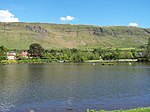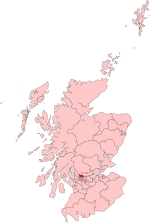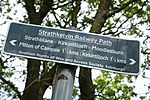Glorat House
Glorat House is a 19th-century mansion house in East Dunbartonshire, Scotland. It is located in Milton of Campsie, in the former county of Stirlingshire. The house is a category B listed building.Glorat was the home of the Stirling family of Glorat, created baronets in 1680. A tower house stood on the site in 1510. In the 17th century the tower was replaced by a larger house: a lintel survives dated 1625 and bearing the initials MS for Mungo Stirling. The house was extensively rebuilt in the Scots Baronial style in 1869, though some 17th-century masonry remains. In 1879 a tower was added. The 60-hectare (150-acre) gardens were laid out in the first half of the 19th century.
Excerpt from the Wikipedia article Glorat House (License: CC BY-SA 3.0, Authors).Glorat House
The Double Hedges,
Geographical coordinates (GPS) Address External links Nearby Places Show on map
Geographical coordinates (GPS)
| Latitude | Longitude |
|---|---|
| N 55.974 ° | E -4.1785 ° |
Address
Glorat House
The Double Hedges
G66 7LJ
Scotland, United Kingdom
Open on Google Maps





